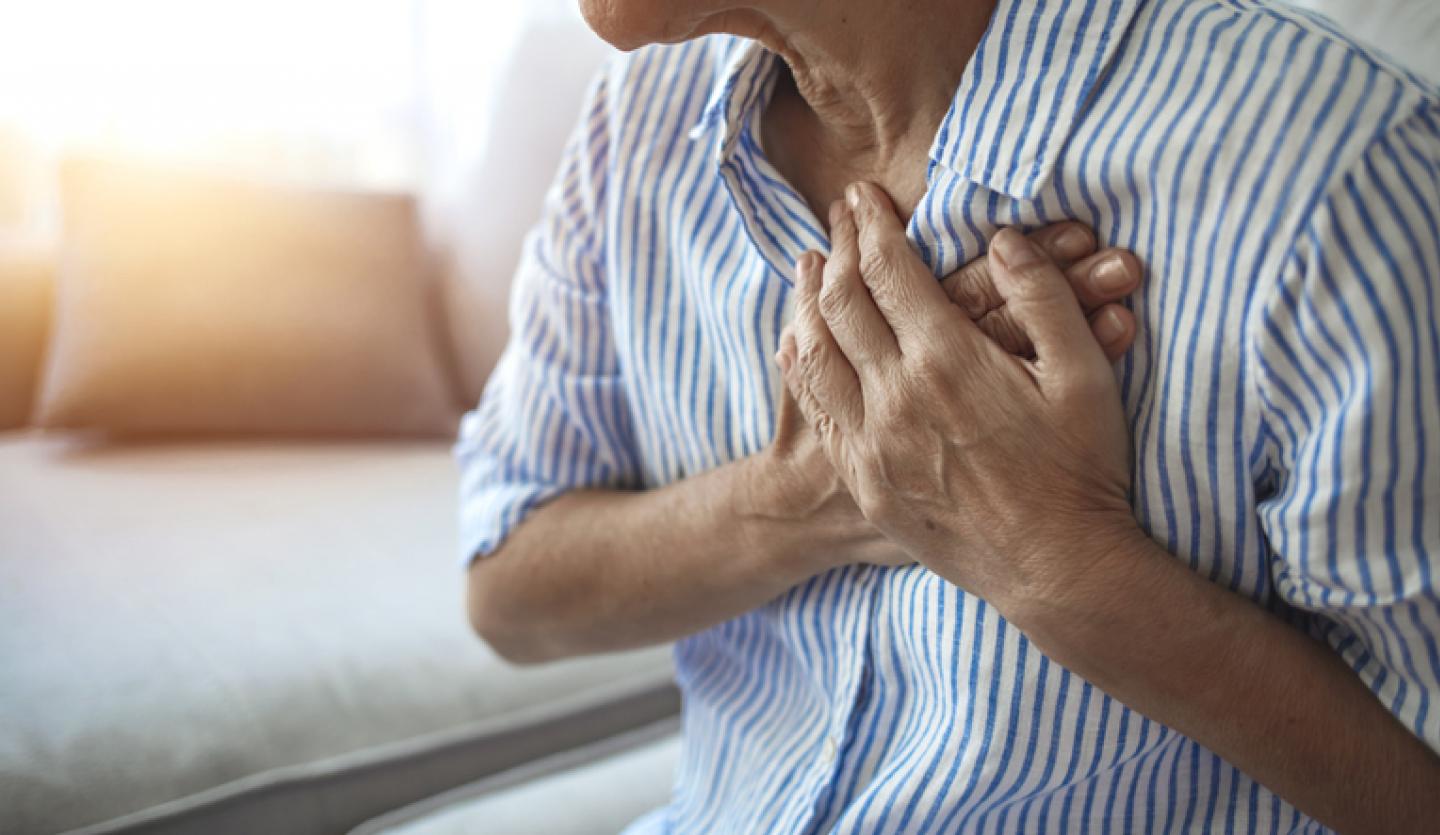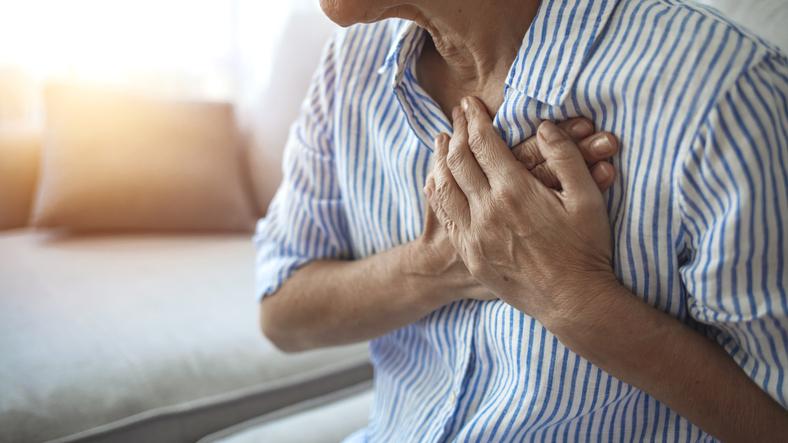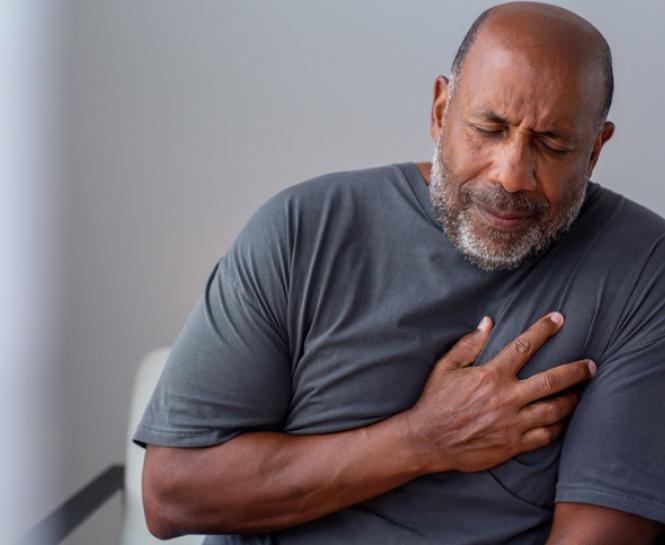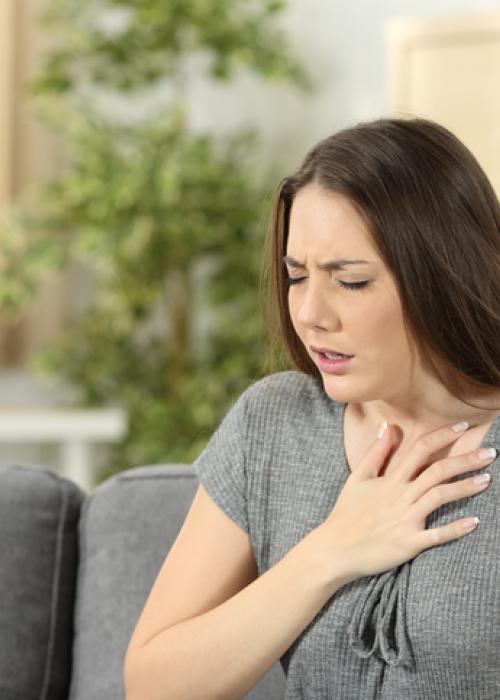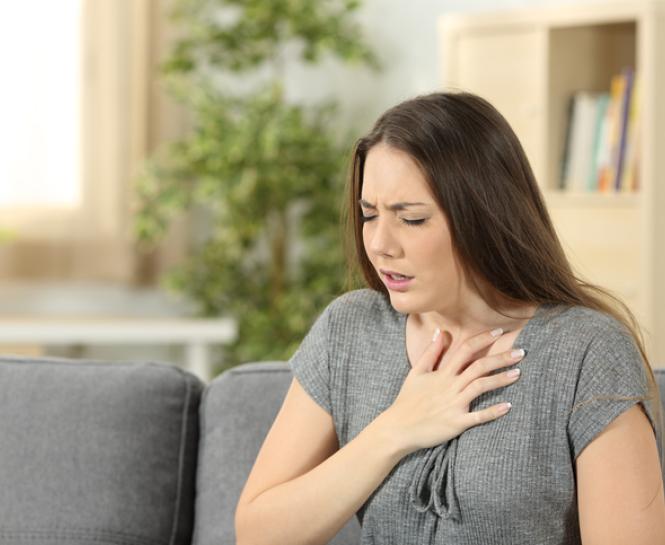“A heart attack is a life-threatening condition that requires immediate medical attention,” said Navid Ahmed, MD, Catholic Health Cardiologist. “Do not second guess your symptoms if you are not feeling well and are concerned you may be having a heart attack. Getting help can save your life and reduce long-term damage to your heart.”
What is a heart attack?
A heart attack, or myocardial infarction, occurs when the heart does not get enough blood supply.
“Coronary artery disease is the most common cause of a heart attack,” said Dr. Ahmed. “This occurs when the coronary arteries that supply oxygen-rich blood to the heart become narrowed or blocked from plaque buildup, making it harder for blood to pass through them.”
Dr. Ahmed noted that heart attacks could also result from a coronary artery spasm, which occurs when there is a severe tightening or spasm of a coronary artery that cuts off blood flow through the artery.
What are the symptoms of a heart attack?
Call 9-1-1 immediately if you are experiencing signs of a heart attack.
“The most common symptom of a heart attack in men and women is chest pain or discomfort that may feel like tightness, squeezing, aching or pressure,” said Dr. Ahmed. “But heart attacks do not always present with chest pain and vary by person and gender.”
In addition to chest pain (angina), other signs and symptoms of a heart attack may include one or more of the following:
- Cold sweats
- Dizziness or feeling lightheaded
- Fatigue
- Heartburn
- Indigestion
- Nausea
- Shortness of breath
Learn more about the signs and symptoms of a heart attack.
Learn more about the differences between a heart attack and a panic attack.
Are there different types of heart attacks?
“Many patients who survive a heart attack are not aware there are different types of heart attacks,” said Dr. Ahmed. “The type of heart attack they have determines recovery, rehabilitation and long-term care.”
ST-segment elevation myocardial infarction (STEMI)
STEMI is a major heart attack that causes significant damage to the heart. Also known as the "widowmaker heart attack,” it is the most common type of heart attack.
- Only a STEMI will show elevated ST segments, a pattern that appears on an electrocardiogram (EKG).
- The coronary artery becomes completely blocked.
- A large portion of the muscle stops receiving blood.
Non-ST segment elevation myocardial infarction (NSTEMI)
- NSTEMI causes the affected coronary artery to be partially blocked.
- NSTEMI will not show any change in the ST segment on an electrocardiogram.
- A coronary angiography will evaluate if there is a blockage in a coronary artery and to what degree. The test uses a contrast dye injected into the arteries through a catheter that allows a doctor to see how blood flows through the heart.
- NSTEMI may cause less heart damage but is still considered a severe heart attack.
Coronary spasm (also known as unstable angina or silent heart attack)
- A coronary spasm occurs when one of the heart’s arteries tightens to the extent that blood flow stops or reduces drastically.
- Imaging and blood test results will tell a doctor if a heart attack has occurred.
- A coronary spasm does not cause permanent damage, but the risk of another heart attack or one that may be more serious increases.
Learn more about common cardiology tests.
How is a heart attack different from heart failure?
Heart failure, or congestive heart failure, causes the heart to be unable to pump sufficient blood around the body. It can start suddenly, such as following a heart attack. Or, it can develop slowly over time due to conditions like high blood pressure, viruses or even a genetic cause.
Heart failure does not refer to the stopping of the heart.
Learn more about heart failure.
How is a heart attack treated?
Treatment options depend on your type of heart attack but typically include:
- Surgery
- Medication
- Cardiac rehabilitation
- Lifestyle changes
- Follow-up evaluation
“Surviving a heart attack affects both physical and mental health,” said Dr. Ahmed. “It is important to regularly check in with your cardiologist to talk about your progress, any setbacks or concerns, and daily lifestyle habits. Routine follow-up care helps to reduce the likelihood of having another heart attack.”
How Heart-Healthy Are Your Habits?
Find Care at Catholic Health
All Catholic Health hospitals in Nassau and Suffolk counties have 24-hour, seven-days-a-week emergency departments that can treat patients presenting with a heart attack.
In addition, Catholic Health is home to St. Francis Heart Center, Long Island’s most-awarded heart program. Cardiac patients have access to the highest level of care to treat a heart attack.
Find a Catholic Health doctor near you. Or call 866-MY-LI-DOC (866-695-4362).

